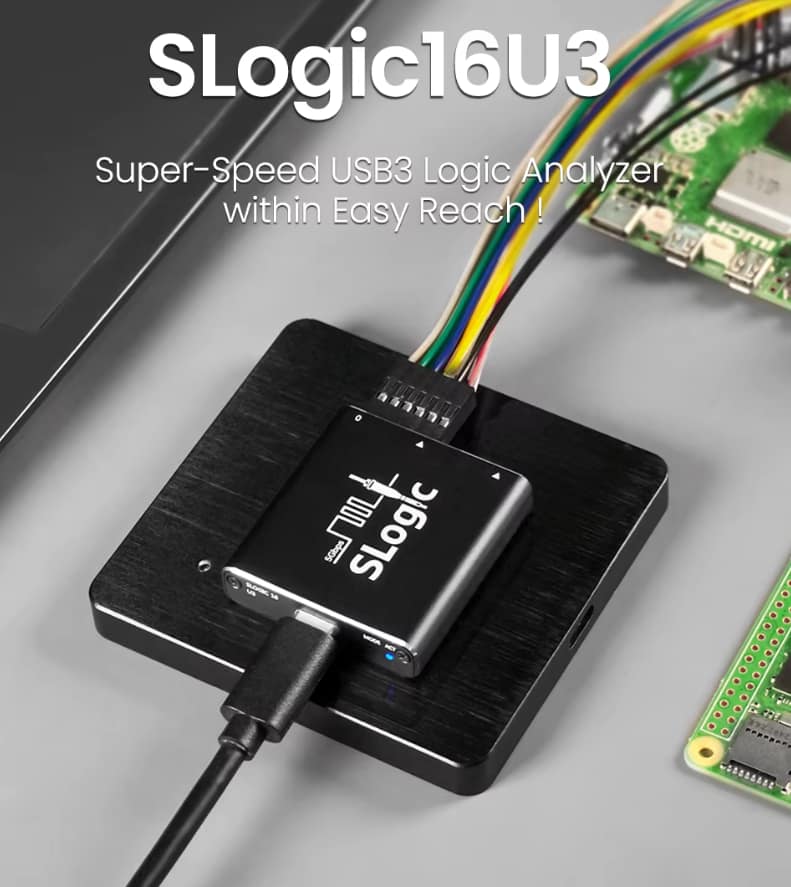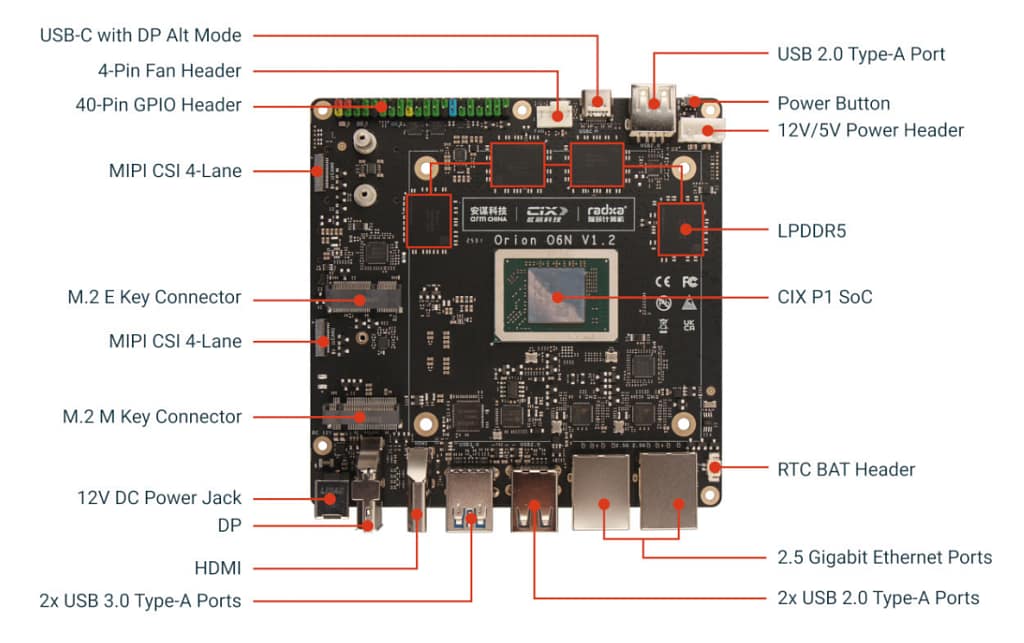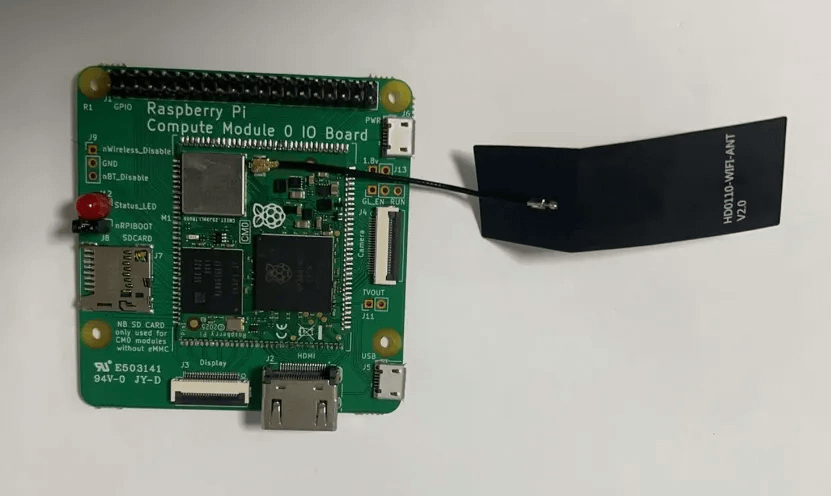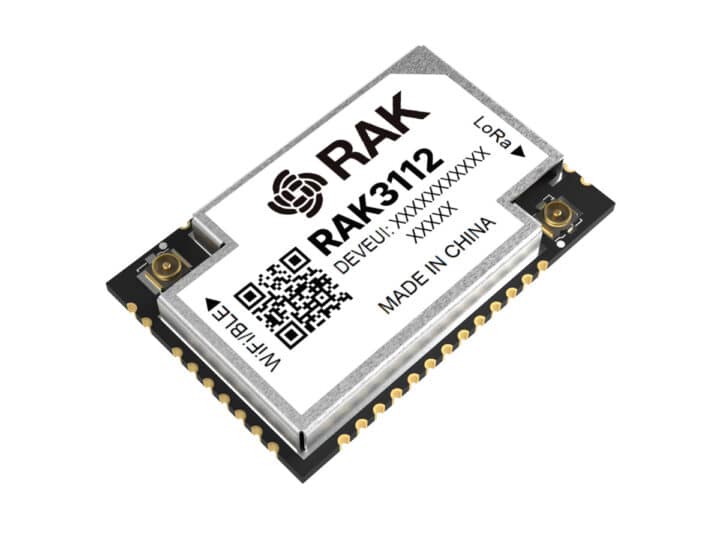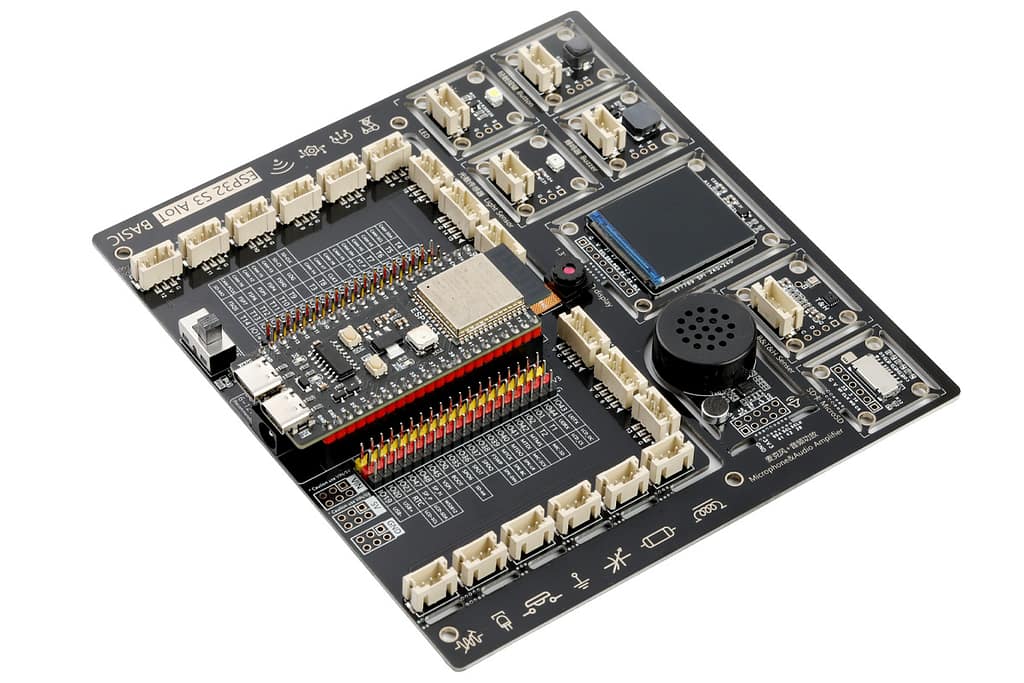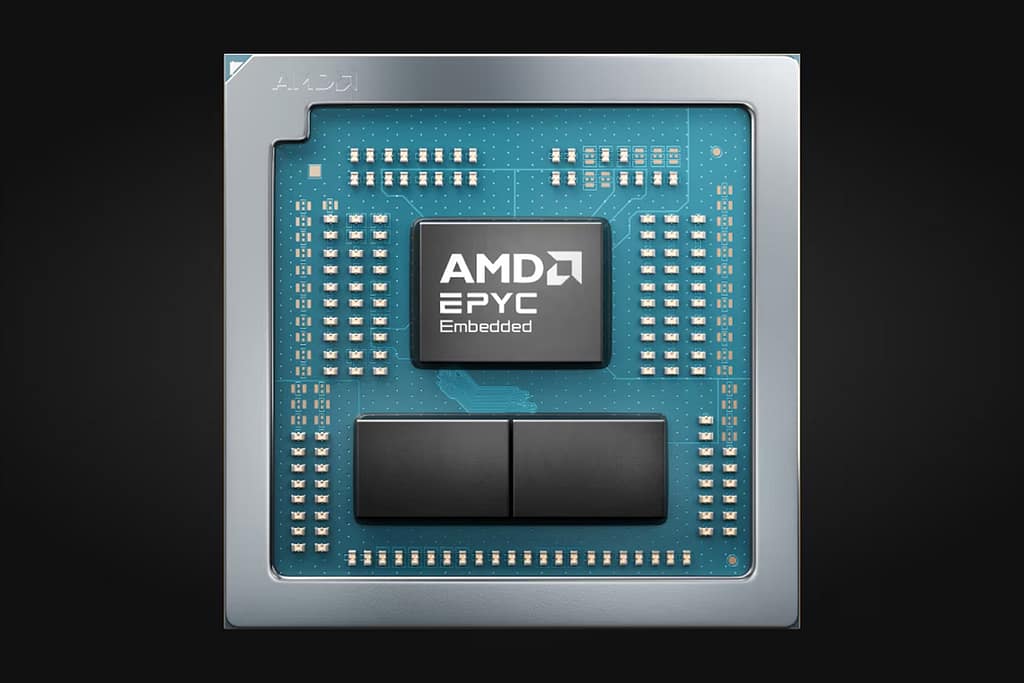The Shrike-lite is an ultra-low-cost FPGA development board built around Renesas’ ForgeFPGA SLG47910V, a compact yet capable FPGA device featuring 1,120 lookup tables (LUTs). Complementing it is the Raspberry Pi RP2040 microcontroller, creating a dual-core “FPGA + MCU” configuration aimed at making hardware-accelerated prototyping affordable for all.
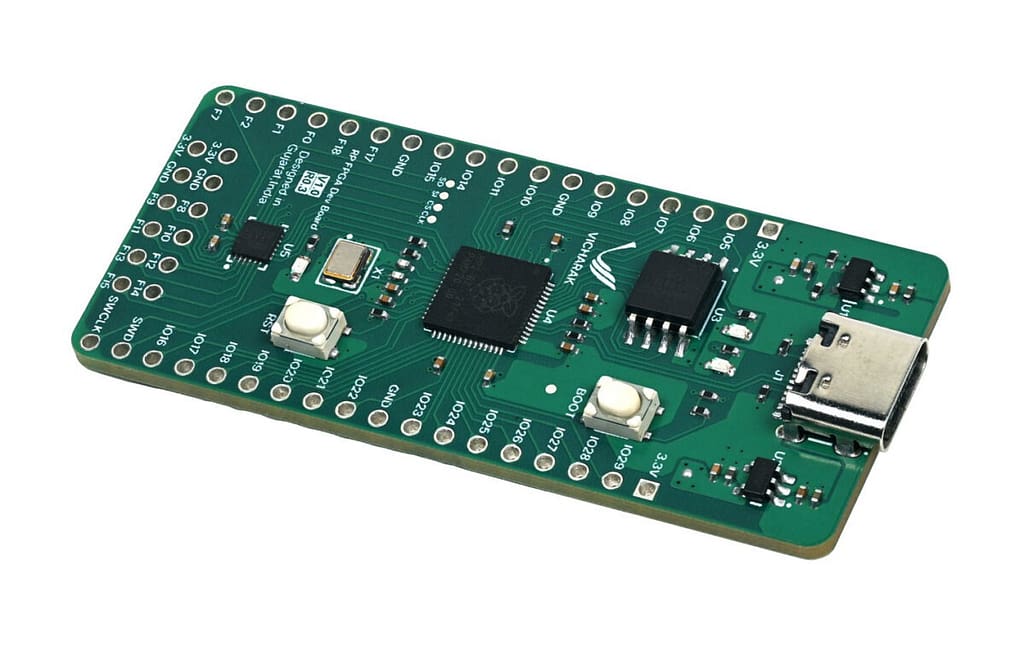
Hardware Overview
Despite its minimal footprint, Shrike-lite integrates a well-thought-out set of essential components and interfaces:
- USB Type-C port for both power and programming
- Two 18-pin headers (mapped to the RP2040 and ForgeFPGA I/O pins)
- One 12-pin PMOD-compatible header for easy peripheral expansion
- Boot and Reset buttons for development convenience
- Two user-programmable LEDs for status indication
The board’s stripped-down, no-frills layout perfectly matches its design philosophy — simplicity, affordability, and accessibility for developers learning FPGA design or building lightweight embedded systems.
Shrike-lite and Shrike Series – Common Specifications
| Component | Specification |
|---|---|
| FPGA Chip | Renesas ForgeFPGA (Model: SLG47910V) |
| FPGA Resources | 1,120 5-bit LUTs, 1,120 D flip-flops, 5KB distributed memory, 32KB block RAM (BRAM) |
| Configuration | Via non-volatile memory (NVM) and/or SPI interface |
| Package Type | STQFN-24 (24-pin ultra-thin quad flat no-lead package) |
| Storage | QSPI Flash for configuration and user data |
| USB Interface | USB Type-C (power + programming) |
| Expansion | 2×18-pin headers (RP2040 + ForgeFPGA I/O), 1×12-pin PMOD header |
| User Controls | Boot and Reset buttons, 2 user LEDs |
| Dimensions | 60 mm × 25 mm |
| Weight | 30 g |
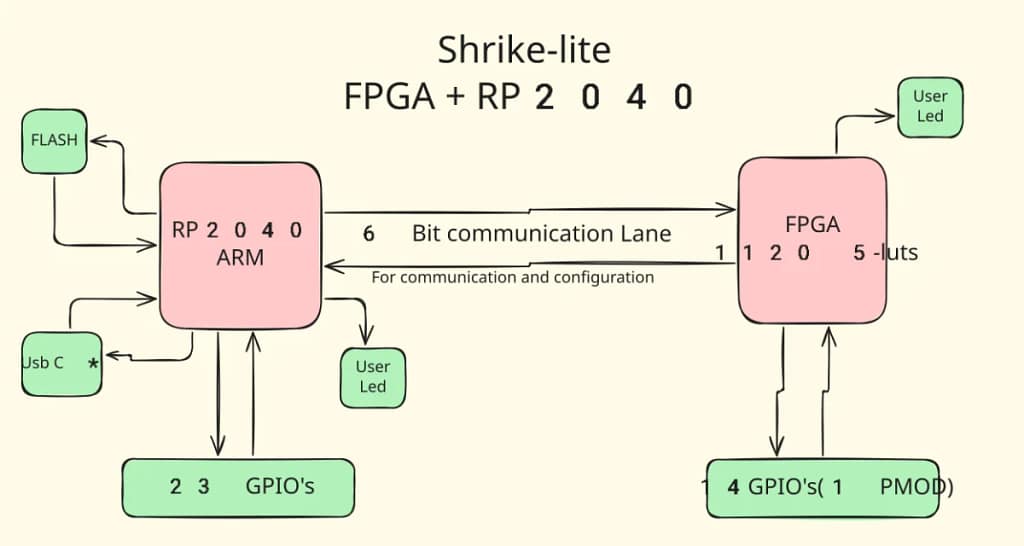
Block diagram
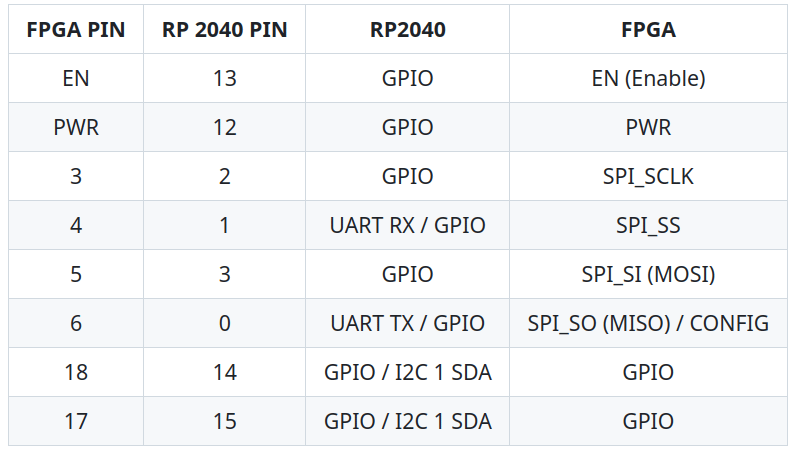
Key Differences and Development Support
While Shrike-lite shares the same base design as the higher-end Shrike board, the main difference lies in the microcontroller:
- Shrike-lite uses the Raspberry Pi RP2040
- Shrike adopts the Raspberry Pi RP2350, a newer variant with upgraded capabilities
Programming Support
- MCU side (RP2040): Firmware can be developed in C/C++ or MicroPython, leveraging the well-established Raspberry Pi SDK.
- FPGA side (SLG47910V): Supports Verilog and VHDL, compatible with the open-source Yosys toolchain, making it an ideal platform for experimenting with digital logic design.
Developers can combine firmware logic and FPGA-based hardware acceleration to create hybrid embedded applications. The team also provides reference designs and wiring examples on GitHub.
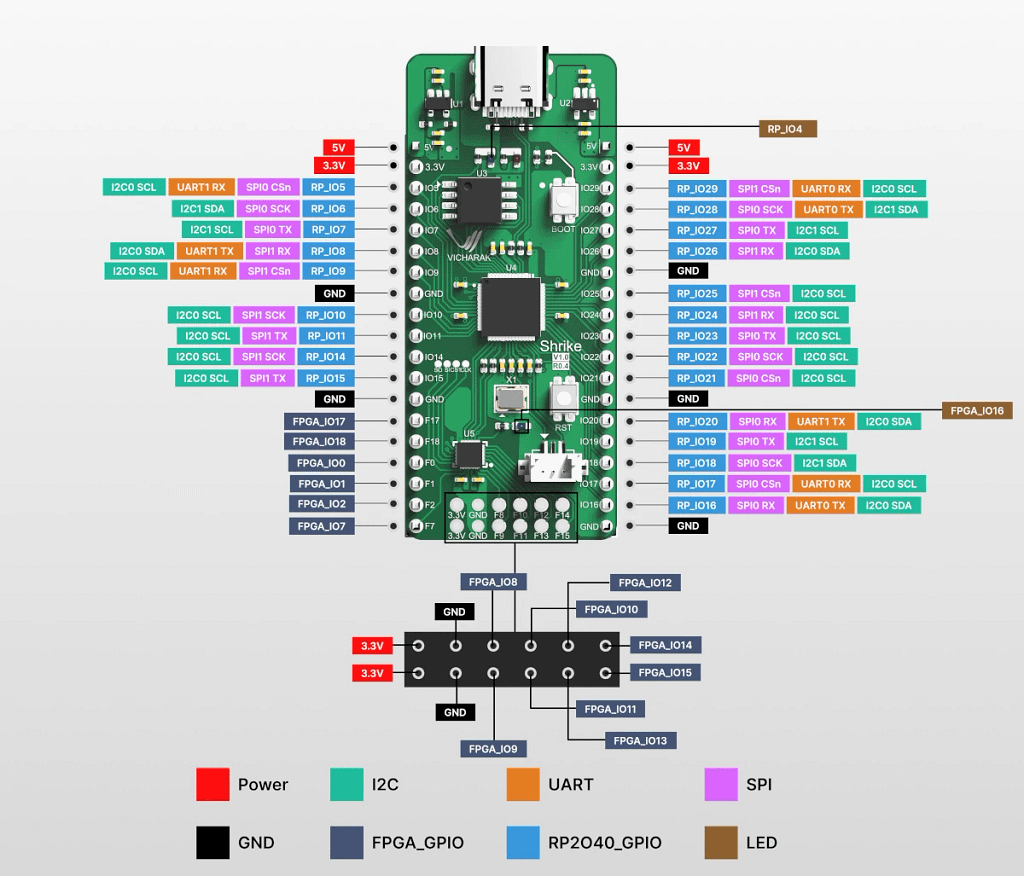
The Shrike-lite carries important significance in the low-cost FPGA landscape. When Renesas first introduced the ForgeFPGA family in 2021, it promised sub-$0.50 FPGAs with open-source Yosys toolchain support. However, most ForgeFPGA-based development boards currently available cost nearly $180, far from that original vision.
With Shrike-lite priced at just $4 (USD), the project aims to fulfill that early promise — providing students, hobbyists, and embedded engineers a genuinely accessible entry point into FPGA development.
Shrike-lite is now available for pre-order via the Vicharack store at $4 per unit. The website initially displays prices in Indian Rupees, so buyers must add the board to the cart and switch their region (e.g., to the U.S.) to view the dollar price.
Note: Shipping is fixed at $28, regardless of quantity — even when purchasing 10 boards. This pricing structure somewhat limits the cost advantage for individual buyers. The first batch is expected to ship on November 15.
Alternatively, users may wait for the Crowd Supply campaign featuring the Shrike (RP2350 version). While this edition will likely have lower shipping costs, its board price is expected to be slightly higher than Shrike-lite. As of now, the Crowd Supply page has not yet been updated with details on the RP2350 model.
The Shrike-lite stands out as one of the most affordable and educational FPGA development boards available — combining the Renesas SLG47910V ForgeFPGA with the Raspberry Pi RP2040 into a compact, developer-friendly form factor. Its $4 price point makes it a strong candidate for FPGA beginners, academic projects, or low-power hybrid designs blending firmware logic with hardware acceleration.

